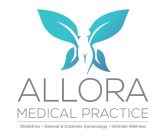Platelet Rich Plasma (PRP) is a novel and increasingly popular form of regenerative medicine that uses the body’s natural healing capability. PRP is a blood derivative. Plasma is the liquid portion of whole blood and platelets are cells responsible for the clotting of blood and production of other necessary growth factors. Platelets not only promote healing but also attract stem cells to the target site through the process of new blood vessel formation and cell regeneration. The amount of platelets and growth factors in PRP in 3-5 greater than that of normal plasma. PRP use has greatly increased in the last 10 years mainly in the field of sports medicine and orthopedics but also in cardiovascular surgery, maxillofacial surgery, medical aesthetics, urology and now increasingly so in Gynecology.
How is PRP made?
Whole blood (15-30 ml) is collected from the patient and mixed with an anticoagulant. It is then centrifuged to separate the red blood cells from platelet poor plasma (PPP) and the “buffy coat” which contains concentrated platelets which are then injected using a fine caliber needle into the target site for PRP therapy. Injection into superficial sites is done after application of a numbing gel. Different preparation methods are available and these result in a number of end-products with different platelet concentrations used for different PRP therapies.
What does PRP contain?
Platelet derived growth factor ( PDGF), transforming growth factor-beta( TGF-beta), epidermal growth factor(EGF), vascular endothelial growth factor (VEGF), fibroblast growth factor (FGF), insulin growth factor (IGF) and other contents.
How does PRP work?
PRP therapy delivers platelets which contain growth factors, proteins, mediators, cytokines and chemokines that contribute to regeneration and healing to the site of interest. These substances cause blood vessel formation and remodeling, cell proliferation, coagulation, cell differentiation, cell movement and maturation, removal of infectious agents and cell debris amongst other processes. Platelets also contain elements such as calcium, magnesium, and dopamine amongst others. The plasma portion of PRP causes healing of connective tissues. All these substances work in conjunction with each other to produce healing and regeneration of tissue.
Some PRP uses in Gynecology:
- Mild-moderate urinary incontinence
Mild to moderate stress urinary incontinence (SUI) which may not benefit from surgery can be treated effectively using PRP while avoiding a variety of intraoperative and postoperative complications.
- Sexual dysfunction
O-shot therapy-This form of PRP therapy has been shown to improve sexual dysfunction especially as concerns desire, lubrication, arousal and orgasm. After applying local anesthetic cream, PRP is injected into the clitoris and a specific area of the anterior vaginal wall to produce a dramatic, enhanced sexual response. O-shot therapy can also be used to treat certain forms of dyspareunia ( pain during sexual intercourse).
Vaginal rejuvenation- PRP may be injected into the vaginal walls and vulva. After PRP injection, blood vessels in the vagina are increased, with a subsequent dramatic increase in sensitivity with the skin becoming thicker and firmer. This results in a more youthful look. The PRP therapy may be used with or without other therapies such as laser or radiofrequency non surgical vaginal tightening for an added rejuvenation effect.
- Wound healing
PRP therapy is used to accelerate healing of wounds such as cesarean section, episiotomy, and gynecological surgery wounds through reduction of swelling, redness, discharge and pain. Due to the ability of PRP to promote new blood vessel formation and its healing properties, it is used to significantly improve wound healing especially in patients who are at a high risk of poorly healed wounds such as those with prior cesarean section, diabetes, twin pregnancy, anemia.
- Mild uterine prolapse
PRP is considered a readily available, relatively inexpensive and effective material for the treatment of mild uterine prolapse. It may also be used during surgery for uterine prolapse to maximize effectiveness and accelerate healing and tissue integrity.
- Menopause and its disorders
Menopause is associated with a variety of symptoms. Of note are vaginal dryness and reduction in size and vitality of the genitals. PRP is used alone or in combination with other treatments to alleviate dryness and increase youthfulness of the vulva. Vulvar dystrophy which is also common in menopause resulting in vaginal dryness, painful sexual intercourse and itching ( pruritus) through lesions such as Lichen sclerosus and eczema are also effectively treated with considerable improvement in quality of life using PRP therapy
- Ovarian rejuvenation
PRP therapy can used to treat low/poor ovarian reserve and Premature Ovarian Failure; a loss of normal function of the ovaries before the age of 40, accompanied by the loss of fertility. PRP is injected into the ovaries which can result in production of new oocytes. Following successful ovarian rejuvenation patients can undergo IVF with increased success or attempt natural conception.
- Repeated implantation failure (RIF) in ART/IVF
RIF is failure to conceive following several embryo transfers in IVF cycles. Several methods have been suggested to manage RIF although there is no consensus on the most effective method. Recently intrauterine infusion of PRP has been noted to improve endometrial receptivity and growth.
- Inadequate/thin/ refractory endometrium in ART/ IVF
Adequate endometrial thickness is one of the factors necessary for successful IVF cycles. Endometrial growth following inadequate ovarian stimulation may be insufficient leading to poor IVF results. PRP has been shown ( in small pilot studies) to thicken the endometrium adequately as well as increase its regeneration leading to increased pregnancy rates.
REFERENCES
- Dawood AS, Salem HA. Current clinical applications of platelet-rich plasma in various gynecological disorders: An appraisal of theory and practice. Clin Exp Reprod Med. 2018;45(2):67–74. doi:10.5653/cerm.2018.45.2.67
- Tehranian A, Esfehani-Mehr B, Pirjani R, Rezaei N, Sadat Heidary S, Sepidarkish M. Application of autologous platelet-rich plasma (PRP) on wound healing after caesarean section in high-risk patients. Iran Red Crescent Med J. 2016;18:e34449.
- Behnia-Willison F, Pour NR, Mohamadi B, Willison N, Rock M, Holten IW, et al. Use of platelet-rich plasma for vulvovaginal autoimmune conditions like lichen sclerosus. Plast Reconstr Surg Glob Open. 2016;4:e1124.
- Nikolopoulos KI, Pergialiotis V, Perrea D, Doumouchtsis SK. Restoration of the pubourethral ligament with platelet rich plasma for the treatment of stress urinary incontinence. Med Hypotheses. 2016;90:29–31
- Pantos K, Nitsos N, Kokkali G, Vaxevanoglou T, Markomichali C, Pantou A, et al. Ovarian rejuvenation and folliculogenesis reactivation in peri-menopausal women after autologous plateletrich plasma treatment; Proceedings of the 32nd Annual Meeting of ESHRE; 2016 July 3-6; Helsinki, Finland.
- Garcia-Velasco JA, Acevedo B, Alvarez C, Alvarez M, Bellver J, Fontes J, et al. Strategies to manage refractory endometrium: state of the art in 2016. Reprod Biomed Online. 2016;32:474–489
- The use of Platelet-Rich Plasma in the Gynaecological Clinical Setting. A review. Vasileios Sanoulis1, Nikolaos Nikolettos2, Nikolaos Vlahos3




